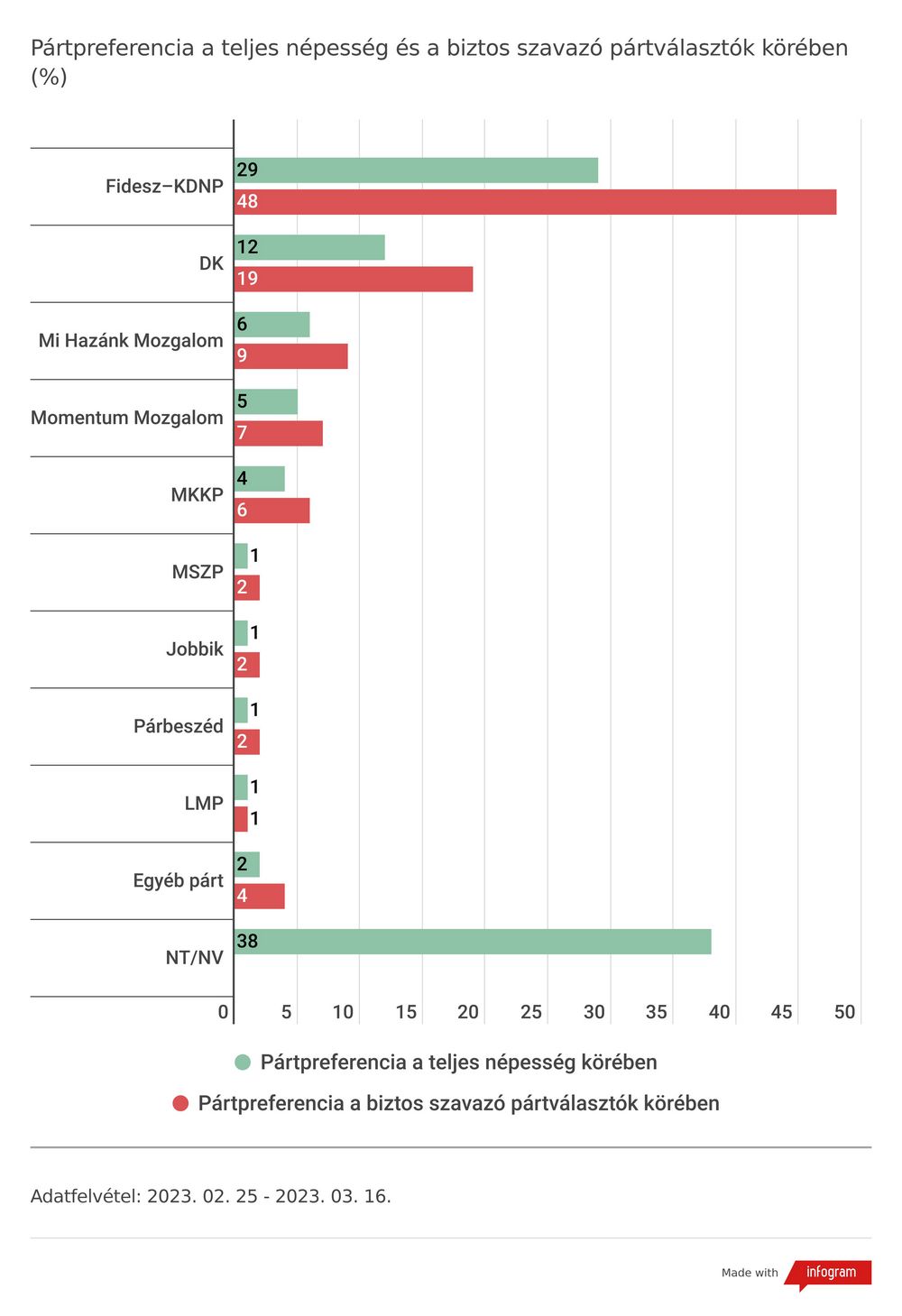Hungarian society is getting more and more tired of the continuous party battles, this is also confirmed by the IDEA Institute's latest public opinion survey: four opposition groups from the large left-wing coalition have already slipped to the level of micro-parties, the LMP, Jobbik, MSZP and Párbeszéd are also 1-1 stands at percent.
The representative survey of the IDEA Institute, published by 168 hours, and carried out at the beginning of March, indicates that the support of Fidesz has not changed among the entire voting age population. 29 percent of the voting-age population would vote for Fidesz-KDNP.
There was no change in the narrowest, but at the same time the most active segment of the electorate, those who voted for the sure-voting party:
the support of Fidesz is still - for a full quarter now - 48 percent.
Fidesz's dominant position is not threatened by any opposition party, they wrote.
They went on to say that there were negligible voter movements on the opposition side compared to February, which did not result in a substantial change in preferences, but at the same time pointed in one direction.
According to the results, three parties would enter the parliament: DK with 12 percent support, Mi Hazánk with six and Momentum with five percent. At the same time, the other parties currently holding parliamentary mandates stand at 1 percent each. These four parties are LMP, Jobbik, MSZP and Párbeszéd.
The Hungarian Kétfarkú Kutya Párt has four percent support. At the same time, the proportion of those with unknown preferences rose again by 2 percentage points, so it now stands at 38 percent - listed the findings of the survey.
The situation of the four "micro-parties" is not better among those who vote for the sure-voting party either: four parties together achieve as much support in the circle as Momentum (7 percent), but the five parties together do not have as much electoral authority as the Democratic Coalition independently. Behind DK (19 percent) comes Mi Hazánk with 9 percent support. In this narrow segment of the electorate, the Hungarian Two-Tailed Dog Party already reaches the 5 percent level of parliamentary participation (6 percent), they found.

Party preferences / IDEA Institute March 2023
"Overall, the support of the parties did not change significantly between February and March 2023. It seems that the Hungarian society has become more and more tired lately due to the continuous party battles, so its distance from the parties is increasing month by month. "Perhaps only one aspect deserves attention, the one-way movement of the support indicators on the opposition side, the clear clarification of the political balance of power," they said.
It was announced: the IDEA Institute collected the research data between February 25 and March 16 using a social media questionnaire.
MTI / civilek.info
Cover image: pestisracok.hu












